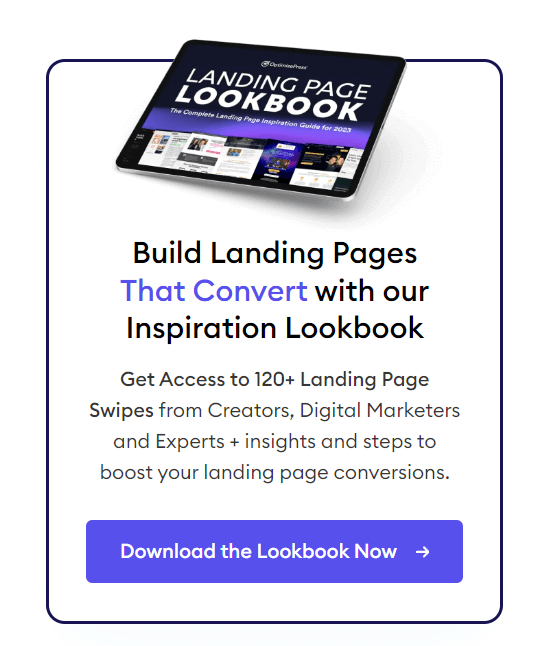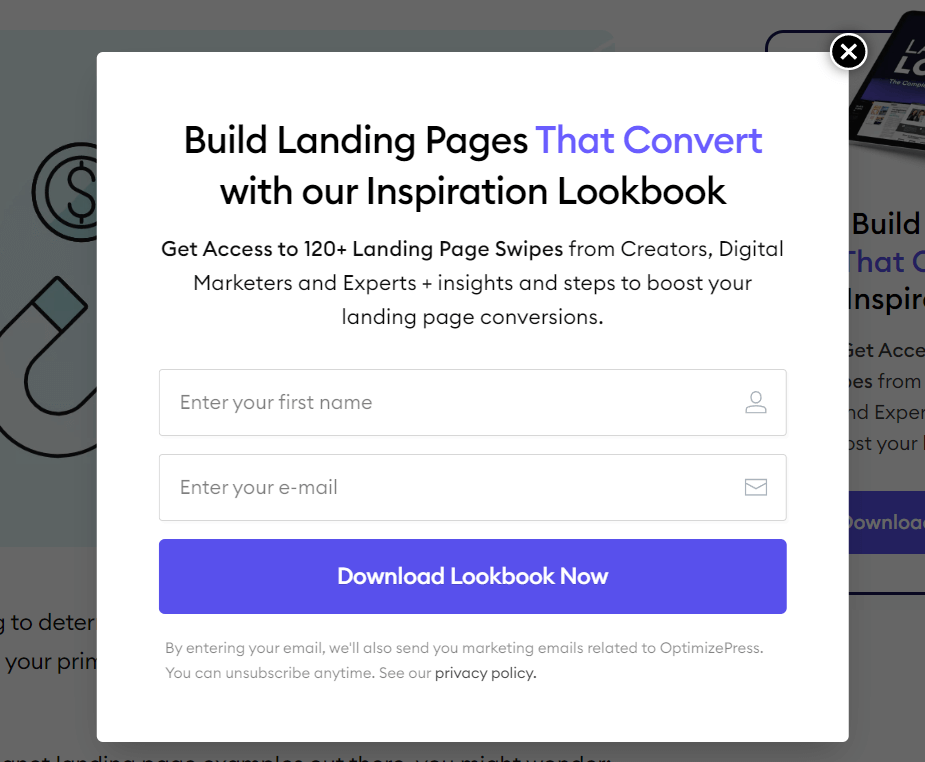How to Build a Lead Generation Funnel in 5 Steps
Last Updated: April 17, 2024 by Editorial Team | Reviewed by: James Dyson

A poorly built lead generation funnel is like casting a wide fishing net and bringing in a good catch only for the net to have a gaping hole at the bottom. A good lead generation funnel incites interest and converts it into revenue for a business.
Effective lead funnels help businesses attract potential customers and convert them into paying customers.
In this article, we’ll describe the steps you need to take to build a lead generation funnel that is perfectly suited for your business.
What is a lead generation funnel?
A lead generation funnel is a well-defined set of steps required to reach out to your target consumers and convince them to become paid customers.
A potential customer successfully completes the lead generation funnel when they share their contact information with your company.

Get More Leads & Sales in WordPress using Conversion Optimized Funnels
Watch our exclusive demo now to learn how to build high-converting landing pages & funnels in WordPress.
Why you need a lead generation funnel
An effective lead generation funnel is not only essential to convert leads. Businesses can also use it to:
This means that efforts on implementing sales and marketing strategies will have increased ROI (Return on Investment).
With these features, you can figure out which of your lead funnel stages are doing well and which ones aren’t. Next, you can change, delete, or add to your funnel using funnel analysis results.
A robust funnel can help with such conversions as nurturing leads and engaging customers post-sales are important funnel activities.
Stages of a lead generation funnel
Lead generation funnels have to be customized to the unique needs of each company. Yet, all these funnels have three sections in common - TOFU (Top of the Funnel), MOFU (Middle of the Funnel), and BOFU (Bottom of the Funnel).
Each section requires different and specialized content and strategies to move as many leads as possible from the top to the bottom of the funnel. These sections can be further divided into distinct stages. These stages represent the leads’ changing feelings and increased awareness about a company.
Top of the Funnel (TOFU)
Awareness
The top of the funnel is the stage where people become aware of your brand. Potential customers learn more about your brand and its products, and start interacting with your content.
The focus here is to attract as many people as possible to your lead generation funnel by creating a lead magnet, SEO, social media posts and campaigns, and paid advertising
At this stage of the funnel, potential leads may not even know that they have a problem that needs solving. Your aim should be to inform people about your brand, brand goals, products, and problem areas your brand can help with.
Your website needs to have SEO (Search Engine Optimized) content so that your web pages show up in search results. An easy way to do this is to have blog posts and articles on your website that rank well for related keywords.
Interest
Now that potential leads are aware of your brand and its offerings, you need to keep them engaged by showing them how your company can help solve their problems.
Apart from SEO content, you need to have other useful information including:
Check out our blog and see how our articles inform leads about our products. At this stage, the aim should be to educate rather than promote.

Middle of the Funnel (MOFU)
Consideration
In this stage of the lead generation funnel, your efforts should shift from educational to promotional. This is because, in the consideration stage, potential leads have identified possible solutions and are weighing them against each other.
Your content should promote your products and highlight how your company is the best choice. Your content has to be in-depth and informative.
The best types of persuasive content that you can offer leads at this stage are:
Intent
When potential customers have narrowed their list of companies and are seeking more information about your products, they are in the intent stage. They are pretty sure that they want to buy one of your products and need a small push to remove all your competitors from their consideration.
You’ll know your leads are in this stage when they request quotes, sign up for more information, or contact your sales reps. Email marketing is a great way to get leads from the consideration stage to the intent stage. You can send customized emails to leads with clear CTAs, encouraging them to continue along the funnel.
Bottom of the Funnel (BOFU)
Evaluation stage
The primary objective at this stage is to convert leads into paying customers or persuade them to take the desired action, whether it's making a purchase, scheduling a consultation, or signing up for a service.
To make this stage shorter and more effective, make sure that your sales reps are responsive, communication is clear and customer service is easily accessible.
To push leads towards the sales funnel and to get them to purchase from your brand, you can offer them:
This part of the funnel is also known as the evaluation stage. Here, potential customers become qualified leads and your company should take sales funnel actions to encourage them to enter the purchase stage.
Lead magnets for a lead generation funnel
Lead magnets need to be present throughout your entire lead generation funnel. They also need to be customized to each stage of the funnel.
Lead magnets are valuable resources or incentives offered to potential leads in exchange for their contact information or engagement with your brand.
Here are some effective lead magnets for a lead generation funnel:
Here’s an example of a lead magnet to download our landing page Lookbook.


How to build a lead generation funnel
Building a lead generation funnel involves strategically guiding potential customers through a series of stages, from initial awareness to eventual conversion
Here are 5 tips on how to build a lead generation funnel that maximizes conversions.
1. Find your ideal customers
If you can figure out how to guide only your target audience to your lead generation funnel, then you can ensure that fewer leads drop off at each stage. So it is best if you create profiles and buyer personas for the type of customer you want to attract.
For example, your company offers website-building applications to small businesses and solo entrepreneurs. You can conduct in-depth research into the kind of content that entrepreneurs consume and perform keyword analysis on such content.
Your lead generation strategy could then include creating blog posts, videos, articles, and guides that are optimized with these keywords and that answer questions that entrepreneurs have. Defining your ideal customer allows your business to align its strategies and minimize wasted efforts.
2. Map out your customer’s journey
To create a good lead generation journey, you need to understand the journey taken by a lead from the awareness stage to the purchase stage. This is known as a customer journey map and is often a visual representation of the actions taken by a customer.
In a customer journey map, all of the customer’s activities are grouped under different stages. Having these actions and touchpoints laid out in a visual format allows brands to customize the lead funnel according to their unique requirements.
Data from Google Analytics, website traffic, and customer behavior can help fill out customer journey maps. You’ll also need to connect with your leads and customers to understand their actions, feelings, and reasons at each stage.
Surveys are a great way to capture customer information. Additionally, your sales reps can connect with your most engaged and loyal customers over the phone to conduct detailed interviews to further refine journey maps.
Here’s an example of a customer journey map from Rightpoint for wealth management companies.

You can see in the image that there are multiple activities listed under each stage. These stages will change based on the company and the industries that it services. This customer journey map also details the goals that the customer wants to achieve in each stage.
You can add as much detail as you want in a journey map. For example, if a brand would like to know how long it takes for a customer to finalize an investment plan from the time they make an appointment, they can check customer data. They could also contact the customer to ask them why exactly it took them a certain amount of time.
3. Create content that maximizes conversions
Buyer personas and customer profiles will tell you what kind of content your customers are interested in. The more you learn about your buyers’ lifestyles, the better your content will be at attracting your ideal customers.
With all this information you can develop valuable resources, incentives, or content that resonate with your target audience and address their needs or challenges. These will serve as lead magnets to attract and capture potential leads.
Follow these tips below to create content that connects with your target audience.
The content needs to promote your company. So this is the best place to showcase reviews and testimonials and to offer product comparisons and product guides.
4. Bring in more traffic
Use various channels such as search engine optimization (SEO), content marketing, social media, email marketing, paid advertising, and partnerships to drive targeted traffic to your landing pages.
Social media is a veritable goldmine for finding leads. Many platforms even allow you to choose the kind of users you want to target with your ads and posts. Use hashtags, trending topics, and influencer tags to drive people to your company pages and websites.
Google Ads, Facebook Ads, and LinkedIn Ads are some of the most popular advertising channels. Don’t limit yourself to just these three. If you have the budget, create ads for other social media sites and search engines.
5. Collect and store information from leads
All this traffic is of no use if you can’t get prospects to give you their contact information and, thereby, complete the lead generation funnel. Customers want something valuable in return for their information.
A call-to-action should be accompanied by a compelling piece of content that acts as a lead magnet. Companies often use free trials, coupon codes, newsletters, free ebooks, and reports to get prospect information.
Take the example of Exceljet. They offer web visitors an irresistible option of downloading a PDF with more than a 100 excel functions in exchange for their email ID.

After collecting email addresses and other information from prospects, you can use them to further improve your lead generation process.
Integrate your lead capture forms with Customer Relationship Management (CRM) systems to automatically store lead data and manage relationships effectively.
Apart from building email lists, a CRM application can help you create customer segments, score leads, automate follow-ups, and provide analytics with all the contact information stored in it.
Conclusion
A well-structured lead generation funnel is the backbone of any successful marketing strategy. By guiding potential customers through a series of stages, from initial awareness to eventual conversion, businesses can effectively attract, engage, and nurture leads towards becoming loyal customers.
Building a lead generation funnel is not a one-size-fits-all approach and you will need to constantly monitor and test it to make necessary changes.
With the right strategy, tools, and mindset, you can build a lead generation funnel that fuels your business growth and establishes your brand as a trusted authority in your industry.

Get More Leads & Sales in WordPress using Conversion Optimized Funnels
Watch our exclusive demo now to learn how to build high-converting landing pages & funnels in WordPress.
Ready to experience the OptimizePress difference?
OptimizePress is the leading funnel builder and landing page builder that is affordable and designed for solopreneurs and founders who need to get their pages live fast.
14 day money back guarantee


